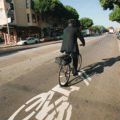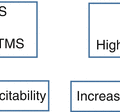Fig. 14.1
AUSILIA: Assisted unit for simulating independent living activities, collaboration between the University of Trento and Azienda Provinciale per i Servizi Sanitari Provincia Autonoma di Trento, Italy, www.ausilia.tn.it
The home environment is a place where people ought to feel comfortable, a place which should be organized according to their lifestyle preferences, and a place where they should feel protected and safe. Unfortunately this is not always the case. We know, for example, that the home environment is a high-risk place for falls, especially among the elderly population with diminished performance in cognition, balance, and sensory-motor capacity [4–6]. The use of smart home technology could be an alternative to reduce the loss of everyday function resulting from aging or disabilities [7, 8] (Fig. 14.2).


Fig. 14.2
User interacting with a robot in the smart home at the DAT center
14.2 Clinical Cases
Sue is a 78-year-old woman living alone since her husband died some years ago. Her two adult daughters are living in the same city not far away from her. Two years ago Sue was diagnosed with Alzheimer’s disease. Since then she spends most days in the nearby day center where she can participate in social activities and eat cooked meals. At home she often wakes up in the middle of the night to go to the bathroom. Her daughters decided that it would be convenient to install some security measures in order to reduce the risk of falling. So when Sue gets up from her bed, the light automatically turns on providing a pathway to the bathroom. This way she will be able to reach the bathroom safely, where the water turns on/off automatically, as does the toilet flush. The lights then automatically provide a pathway back to bed.
Anne is a 68-year-old woman, divorced 10 years ago. She is living with her daughter and her 6-year-old grandson. Her daughter works during the day and her grandson goes to school. Anne has arthritis and spends most of the day alone. In the morning she needs a lot of time to get up since her joints are stiff and aching. To facilitate her independence, she has a remote control to turn on the light, open the curtains and windows, and change the bed position. The remote control also acts as a hands-free phone, allowing her to call her sister before getting out of bed.
Martin is a 72-year-old single man who recently had an accident while going by bicycle to the local post office. A car cut him off and Martin fell on the ground, resulting in a mild traumatic brain injury. He was brought to hospital and had a period of rehabilitation, but at discharge still had potential for further recovery. Martin lives far away from the rehabilitation center and was unable to organize transportation for outpatient services. He was offered a home training program from the rehabilitation center. Each morning he connects online for a 45-min rehabilitation training session with the occupational therapist at the center who uses strategy training to assist him to overcome the problems he encounters when performing daily activities.
In the above aforementioned situations, the occupational therapist helps the person prioritize everyday activities that need to be carried out in the home environment, but that the person is unable to perform, performs with difficulty, or is not satisfied with the way it is performed [9]. When the person does not have the capacity to adapt himself to the environment, the environment must be adapted to his/her personal needs. Thus environmental adaptations and technological solutions are an important part of the rehabilitation process, and occupational therapy interventions play a crucial role in working with the individuals to identify the most appropriate technology for them, promoting independent living in the proper home. Determining the best match between the person’s needs and technology is essential so that the person feels comfortable with the solution and the risk of abandonment of technology is diminished. Since advanced technology is a result of the effort of different professionals, it is necessary to work in an interdisciplinary team to find the best technical and functional solution. Researchers and inventors must work alongside occupational therapists, rehabilitation clinicians, counselors, sociologists, and architects, to develop solutions that respect the unique sovereignty of the home environment and to ensure connections to an accessible community, where electronic wayfinders and wearable task management systems may facilitate outdoor activities [7, 8].
Stay updated, free articles. Join our Telegram channel

Full access? Get Clinical Tree





